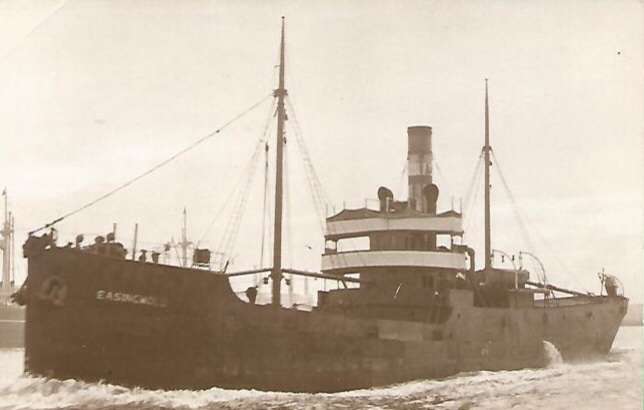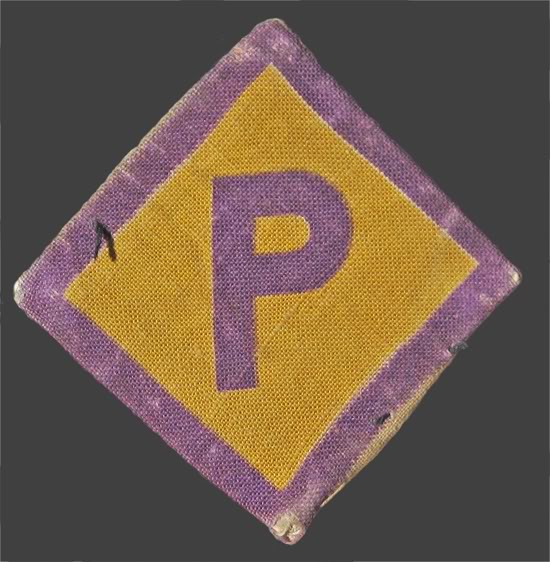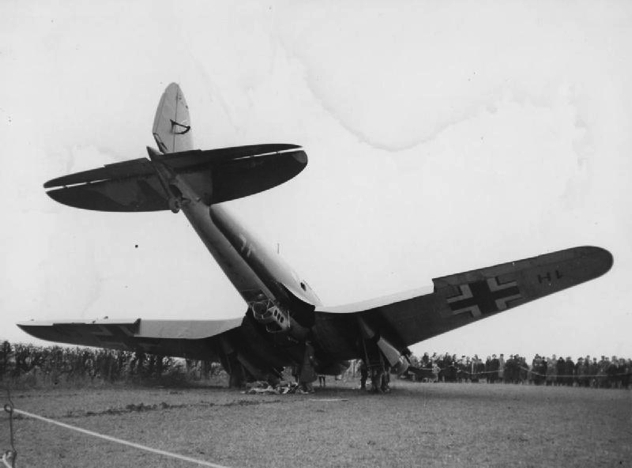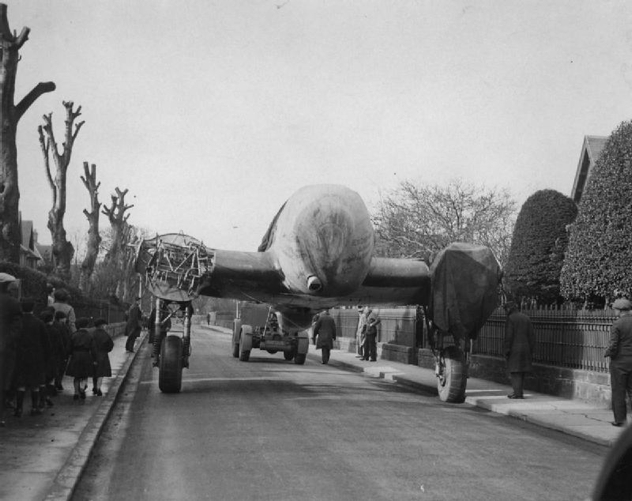Thursday 27 February 1941
 |
| A noose on a gibbet is "Reserved for Hitler." London, 27 February 1941. |
East African Campaign: The South African troops in Mogadishu become increasingly apprehensive about sanitary conditions. They discover unburied bodies, shallow graves, and other issues. However, they have to occupy the city, so strict sanitation and health practices are mandated.
Gazelle Force is disbanded, having achieved its mission of harassing the Italians north of Kassala. It is replaced by a new force named Kestrel under the command of Lieutenant-Colonel P. S. Myburgh DSO, MC, 25 Field Regiment.
At Mersa Taklai, Eritrea, the 14th Battalion of the Free French Foreign Legion arrives by boats to supplement the Indian 7th Infantry Brigade.
European Air Operations: RAF Bomber Command sends 30 Wellington bombers of Nos. 40, 115, 214 and 214 Squadrons against the newly commissioned German battleship Tirpitz, still at Wilhelmshaven. While 26 aircraft manage to press home their attacks through strong anti-aircraft fire and claim success, the attack causes little or no damage to the ship. The official report blames the poor weather on the failure, which is but one of many RAF failures against the battleship.
The Luftwaffe sends some planes over the English east coast, which drop some bombs and cause some damage. The Germans stay on the ground after dark.
 |
| SS Empire Tiger, which vanishes without a trace on 27 February 1941. |
Another convoy beaten up. The shipping strain is enormous, and represents our only real chance of defeat.It's unclear which particular convoy Menzies is talking about because two separate convoys have been "beaten up" within the past week: OB 289 and OB 290. He notes that this will have a direct effect on his country, as "Australia's export trade is going to suffer" due to the shipping losses.
Norwegian tanker Sandefjord, captured by German heavy cruiser Admiral Scheer on 18 January 1941, arrives in France. It carries 11,000 tons of crude oil. It will be renamed Monsun for German service.
German cruisers Scharnhorst and Gneisenau refuel from tankers Ermland and Friedrich Breme in the mid-Atlantic west of the Azores. The tankers take the 180 POWs taken in the action of 22 February.
U-47 (Kptlt. Günther Prien) torpedoes and sinks 4233-ton British freighter Holmlea west of Ireland. There are 2 deaths and 11 survivors. Some accounts place this attack on the 26th or 28th.
Some sources place Italian submarine Michele Bianchi's sinking of British freighter Baltistan today, others on the 26th or 28th. There are 18 survivors and 51 deaths.
The Luftwaffe attacks 1562-ton British freighter Old Charlton off Harwich. There is one death, freighter Catherine Hawksfield rescues the crew.
The Luftwaffe attacks 1109-ton British freighter Blacktoft, disabling it. Taken in tow, the Blacktoft reaches Harwich.
The Luftwaffe damages 1556-ton British freighter Newlands at the Barrow Deep. Fortunately for the freighter, a German bomb that falls on it turns out to be a dud.
The Luftwaffe bombs 10,000-ton British transport Anchises west of Bloody Foreland. The Anchises is disabled but remains afloat as the day ends.
A Luftwaffe aerial mine hits British 5085-ton freighter Cape Clear west of Liverpool. The blast damages the engines, but the Cape Clear eventually makes it back to Liverpool.
Royal Navy 266-ton minesweeping trawler HMT Remillo hits a mine and sinks in the Humber. There are 17 deaths, including skipper H.H. Jarvis.
British 203-ton trawler Christabelle hits a British mine just southeast of the Faroe Islands and sinks. There are ten deaths.
German 1371-ton freighter Adele Ohlrogge hits a mine and sinks in the Jade Bight.
The weather is rough, and shipping suffers as a result. French destroyer Mistral collides with British oiler Black Ranger, slightly damaging it. Separately, the destroyer HMS Chesterfield also is involved in a collision with submarine H 32, but the damage is inconsequential.
British 1020-ton freighter Stanwold founders about 10 miles west of Selsey, Chichester near the Isle of Wight. The cause is unknown.
British 438-ton freighter Noss Head sinks near Gardenstown, Eastern Scotland. The cause of the sinking is unknown.
British 4886 ton pig iron freighter Empire Tiger is last seen today in the Atlantic. The ship is never seen or heard from again. It is a complete mystery what happened to it. There are 34 men on board, they are listed on Tower Hill Memorial. The location of the sinking is unknown, speculation is that it sank about 30 miles south of Iceland.
Norwegian 181-ton auxiliary schooner M/S Stjørnfjord, constructed in 1878, runs aground and is wrecked at Madsøgalten, Leka, Norway.
Royal Navy submarine HMS Taku breaks down in the Atlantic and has to be assisted back to Londonderry by tug Salvonia.
Italian submarine Bianchi attacks 7603-ton British freighter Empire Ability in Convoy 290 south of Iceland but misses.
Convoys OB 291 and OB 292 depart from Liverpool,
U-559 (Oberleutnant zur See Hans Heidtmann) is commissioned, U-603 and U-604 are laid down.
 |
| SS Stanwold sinks mysteriously, 27 February 1941. |
The Italian destroyers carrying fresh troops arrive from Leros in the early morning hours of the 27th, and two MAS motor-launches ferry these troops from destroyers Crispi and Sella to reinforce the Italian troops already on the island. Faced with overwhelming force, the commandos are forced to flee from their position and the British who arrive later to try to evacuate them find nothing but a few stragglers and a dead body. At 03:00, the Royal Navy ships finally locate the commandos on the east side of Kastelorizo and come in to evacuate them. However, not all of the commandos can escape; the Italians take a number of them as prisoners.
Offshore, HMS Hereward spots the Italian naval force, but, instead of attacking immediately, looks for fellow destroyer HMS Decoy. It does not find the Italian ships again, which proceed with their operations unmolested. Italian destroyer Crispi attacks patrolling destroyer HMS Jaguar, inflicting some damage, then escapes.
After evacuating the commandos, the British retreat to Alexandria. This leaves the Italians in possession of the valuable island and marks a rare victory for the Italian military. Admiral Cunningham later opines that Operation Abstention was "a rotten business and reflected little credit to everyone." As usual, there are some claims that the operation served as a good "learning experience," but the evidence for this is scant. The Admiralty is not amused by the whole affair and court-martials the captain of HMS Hereward for lack of initiative in engaging the Italian destroyers when he first sighted them (found guilty).
Operation Abstention is another failed British commando mission, in company with the assault on an Italian aqueduct in southern Italy earlier in the month and several other rough operations. While many fondly remember the successful commando exploits from later in the war, remembering these early difficult operations provides a more balanced picture.
At Malta, the Luftwaffe drops mines across Grand Harbour and Marsamxetto. Four of the mines drop on land. The British close the harbor while the Royal Navy isolates the mines. There are several air raids during the day.
The Free French continue bombarding the Italians holed up in El Tag fortress at the Kufra Oasis in southwestern Libya. The Italians are taking a lot of damage and do not have any artillery to match that of the French.
Convoy ANF 16 departs from Port Said bound for Piraeus.
 |
| Italian raider Ramb I burning and on its way down, 27 February 1941. |
Spy Stuff: Japanese Acting Consulate General Ojiro Okuda sends another detailed spy transmission to Tokyo:
Apparently the Fleet goes to sea for a week of training and stays in Pearl Harbor one week. Every Wednesday, those at sea and those in the harbor change places. This movement was noted on last Wednesday, the 26th.Okuda also, as usual, provides a detailed summary of the ships in port, noting that the USS Yorktown is absent.
Spanish/Italian Relations: With Spanish leader Francisco Franco having refused to side with the Axis per his letter to Adolf Hitler dated 26 February 1941, the reaction from the Axis is swift. The Axis leaders, with some justification, feel that Franco owes his position to their assistance during the Spanish Civil War in the 1930s. They take Franco's refusal as an abrogation of an implicit bargain: we help you, you help us. Accordingly, Italian Duce Benito Mussolini has his ambassador deliver to Spain a bill for sums expended by Italy to support Franco during that earlier war: 7.5 billion Lire.
 |
| Jimmy Stewart and Ginger Rogers show off their Oscars, 27 February 1941. |
German/Japanese Relations: Japanese Minister of Foreign Affairs Yōsuke Matsuoka arrives in Berlin, the first stop in his tour of Axis capitals.
Dutch Homefront: The SS and local Dutch police take extreme measures, shooting protesters and taking others captive, to suppress the General Strike. By today, it basically is over, and Martial Law is in effect. This is the only direct action by civilians in Europe against the Holocaust.
American Homefront: The 1940 (13th) Academy Awards are held at the Biltmore Hotel. The format changes dramatically to inject more suspense into the proceedings; instead of the previous practice of releasing the names of the winners beforehand, now the identities of the winners are kept secret until the actual award. This change leads to the use of "May I have the envelope, please?" for each award. This is done because, before the previous ceremony, the LA Times published the names of the winners before the ceremony.
In terms of awards, David O. Selznick produces the Best Picture winner for the second consecutive year. Having won for "Gone With The Wind" previously, this year he wins for "Rebecca." However, "Rebecca" wins only one other award, for Best Cinematography (Black and White), making it the least successful Best Picture winner from 1940 onward. Walt Disney's "Pinocchio" makes history by winning competitive Oscars for Best Song and Best Score, while "The Thief of Baghdad" wins three Academy Awards, the most of the night.
James Stewart wins for Best Actor for "The Philadelphia Story," Ginger Rogers wins Best Actress for "Kitty Foyle," John Ford is named the Best Director, Walter Brennan wins his third Academy Award as Best Supporting Actor for "The Westerner," and Jane Darwell wins Best Supporting Actress for "The Grapes of Wrath." Henry Fonda does not win Best Actor for "The Grapes of Wrath," but his performance endures and is often reckoned the best of his legendary career.
 |
| Jimmy Stewart with his Oscar for "The Philadelphia Story," 27 February 1941. |
February 1941
February 1, 1941: US Military Reorganization
February 2, 1941: Wehrmacht Supermen
February 3, 1941: World Will Hold Its Breath
February 4, 1941: USO Forms
February 5, 1941: Hitler Thanks Irish Woman
February 6, 1941: Operation Sunflower
February 7, 1941: Fox Killed in the Open
February 8, 1941: Lend Lease Passes House
February 9, 1941: Give Us The Tools
February 10, 1941: Operation Colossus
February 11, 1941: Afrika Korps
February 12, 1941: Rommel in Africa
February 13, 1941: Operation Composition
February 14, 1941: Nomura in Washington
February 15, 1941: Churchill's Warning
February 16, 1941: Operation Adolphus
February 17, 1941: Invade Ireland?
February 18, 1941: Panzerwaffe Upgrade
February 19, 1941: Three Nights Blitz
February 20, 1941: Prien's Farewell
February 21, 1941: Swansea Blitz Ends
February 22, 1941: Amsterdam Pogrom
February 23, 1941: OB-288 Convoy Destruction
February 24, 1941: Okuda Spies
February 25, 1941: Mogadishu Taken
February 26, 1941: OB-290 Convoy Destruction
February 27, 1941: Operation Abstention
February 28, 1941: Ariets Warns Stalin
2020




